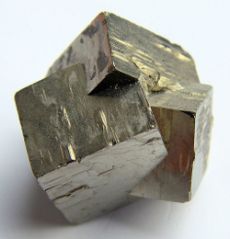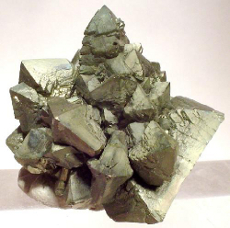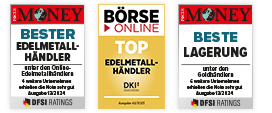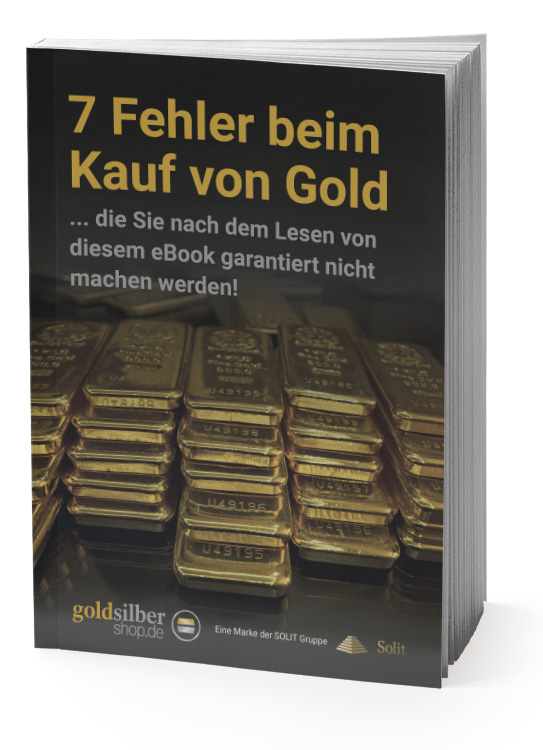Fool's gold, heretic gold and fool's gold: a look at the history of gold
One or the other of our readers may have already become aware of fool's gold, but to some others the word may mean nothing at all. Is it a special variant of the yellow precious metal? And what do cats have to do with it?
Cat's gold is a mineral and belongs to the mineral class of sulfides and sulfosalts
Cat's gold has neither with cats nor with gold something to do, but is only a golden shining, in nature very frequently occurring mineral.
Chemically it is an iron (II) disulfide with the formula FeS?, which belongs to the mineral class of sulfides and sulfosalts. Cat's gold is opaque in any form and belongs to the so-called isomorphic crystals, which form their own shape completely.
Cat's gold is available in two different forms
It was not until the 19th century that it was recognized that fool's gold exists in nature in two different crystal forms, as pyrite and marcasite. Marcasite is less dense and stable than the chemically identical pyrite. It has mostly tabular, pyramidal or prismatic crystals, while pyrite, which is formed only at temperatures above 400 degrees, forms cubic crystals often in pentagondodecahedrons, dodecahedrons whose faces are each pentagonal and can reach over 25 cm in size.
The golden pyrite consists of iron and sulfur

Pyrite in cube-shaped crystals. Locality unknown

Marcasite. Locality Cap Blanc-Nez (Escalles), Nord-Pas de Calais, France. (© Rob Lavinsky, www.iRocks.com)
Pyrite, in particular, was and is often mistaken for gold because of its vivid metallic gold luster. However, pyrite and marcasite are not malleable and, with a Mohs hardness of 6 to 6.5, are significantly harder than gold, which has a Mohs hardness of only 2.5 to 3. They also leave a distinct black line on the chalkboard because they contain iron. As the most widespread sulfide mineral, pyrite has been found at 30,000 sites worldwide, whereas marcasite has been found at only 3,900 sites, including occurrences in Germany for both minerals. At some sites, pyrite can actually contain tiny amounts of gold, which can make industrial gold mining economical. Among the largest deposits of pyrite are the Spanish Minas de Riotinto - deposits about 1 billion tons - and Navajún.
But back to the name. Because of their composition and external form, but also their color and properties, different popular names are common for both crystals, which are used today mainly for pyrite. Sulfur pyrite may perhaps be the most familiar among them. Pyrite - derived from the Greek word ??? (pýr) - was the name of the mineral in Greek antiquity, because splinters can be struck off with a flint, which ignite and burn.
Cat's gold is also called heretic gold
The popular name of fool's gold, on the other hand, is explained by the deceptive gold luster of the mineral and has evolved from the name heretic gold. Originally derived from the name of the Cathar sect in southern France, the word "heretic" as a term for apostates was also transferred to other non-religious-based deviations and crimes, including metal forgery ("ketzern").
From the wrong, folk-etymological derivation of the Cathars (lat. cathari) from the word cat (lat. cattus), widespread in the Middle Ages, the heretics were associated with cats and imputed to them a "feline" false nature. Katzengold is thus heresy gold in the sense of the word meaning "inauthentic, false gold" - much in the same way that the cat table, still common today, refers to an "inauthentic," non-conformist table at a banquet table. Less common in German is the term fool's gold, which corresponds to the term fool's gold used in English-speaking countries. 
Click here for more information:
The origin of gold
Fine gold as an investment
Dimensions and weight of Current gold price
Continuation of the basic knowledge of gold and silver
Origin, occurrence and extraction
- Occurrence on earth
- Origin of gold and silver
- Resources Gold and Silver
- Gold and silver mining
- Silver rush at the mountain of promise
- Austrian school of national oleonomy
- Quantity equation
History of precious metals as currency
Supply, demand and stocks
- Gold Silver Industry Demand
- Supply Gold Silver
- Blessing and curse of the compound interest effect
- Gold Silver Properties
- Gold Silver Demand
- Gold Silver World Stocks
Historical performance
- Historical development gold price-silver price
- The Hunt speculation
- Price discovery gold silver
- Correlation analysis
- Derivation - Gold- Silver Development
- Gold Silver Ratio
- Reasons rise gold and silver since 2001
- Current gold price
- Current silver price
Forecast for future performance
- Gold price forecast
- Gold price projection according to Eeden-Müller
- Dow gold ratio
- Gold-oil ratio
- Dow silver ratio
- Silver Price Forecast
- Effects of strongly rising gold-silver prices
Investment opportunities
- Investment opportunities gold and silver
- Investment in jewelry
- Investment in coins, medals and bars
- Exchange Traded Funds and commodities
- Direct investment in mining stocks
- Mining funds
- Futures market transactions
- Investment Philosophy
Summary
Guidebook "7 mistakes when buying gold" free eBook
Our guidebook on buying gold tells you how to avoid the most common mistakes when buying gold and get more gold for your money. You will receive it for free as a PDF file when you sign up for our newsletter.






